The Catalyst Killing - [30]
Frans Heidenberg explaned that his name came from his German father, but that he himself had been born to a Norwegian mother in Norway and had lived here all his life. He had had his own architecture firm in Oslo since completing his studies in 1928, and had been increasingly successful in recent years. A couple of nephews were in the process of taking over the business, but he still had an office and worked there one day a week. Otherwise, he spent most of his time here in his spacious and comfortable home.
Once installed in the living room, I declined the offer of alcohol or coffee, but said yes to a glass of water. I remained seated while I reflected that my host appeared to be the perfect diplomat, and about as far removed from a stereotypical Nazi traitor as I could imagine.
Paintings from Norway and Germany hung on the walls between the monumental bookshelves, as well as some photographs from Frans Heidenberg’s childhood and youth in the first decades of the century. I looked around discreetly for signs of other inhabitants in the vast house. My host obviously read my thoughts and shook his head apologetically.
‘I am afraid that only I live here, sadly. The house was built towards the end of the 1930s, when my firm had had its first real success. It was built for a larger family that failed to materialize. I never got married. So now I sit here by myself with plenty of space for my books and paintings.’
He took a pensive sip of coffee.
‘A woman did live here with me once upon a time, in the final months of the war. We were engaged and planned to get married in July 1945. So the war ended at what was a very inconvenient time for me and under very unfortunate circumstances. I was, as you no doubt know, absent for a year and a half. And when I came back, she and all her things were gone. I was forty-six years old and for reasons that I am sure you understand, I was not particularly active in the city’s social life in the years that followed. And there you have it. I gave up any hope of having a family and ceased to be politically active. All my time was given over to saving the firm, which was in a very precarious situation following my absence.’
I stared at him, fascinated. If Frans Heidenberg was still a Nazi, he struck me as being a Nazi with an extremely human face.
‘I know what you are thinking: how could I put myself in that situation? It was in part my strong German roots, but more my fear of Bolshevism that had been stoked by tales of horror from the Russian Revolution in my youth. In the 1930s, I thought that the alternative to a strong Germany ruled by the Nazis was a strong USSR ruled by the Bolsheviks. And I saw the latter as a far greater threat. And I might as well admit that I still do.’
He smiled and shrugged disarmingly.
‘But all that is now well in the past, and I hope that my life today is of little interest to you. I would of course be more than happy to help you to solve your crimes if I could, but I must say that I do not see how that is possible.’
I asked him whether he had heard of Marie Morgenstierne or Falko Reinhardt. He replied without any hesitation that Marie Morgenstierne was unknown to him, other than what he had read in the papers following her ‘unfortunate demise’.
He did, however, to my surprise, admit that the name Falko Reinhardt was familiar to him. He had received a letter from Falko a couple of years before, asking if he would be willing to answer some questions about his role during the Second World War. He had, however, not felt comfortable fraternizing with communists and for his part had no desire to rip open old wounds from the war. He had therefore sent a reply to say that he did not wish to be contacted about the matter. And he had repeated this in a firm and friendly manner when Falko Reinhardt later telephoned him all the same.
He had heard nothing more from the young man. But he did remember the unusual name, and had read about Reinhardt’s disappearance in the newspaper only a few months later. Frans Heidenberg had anticipated that the police might contact him, and therefore ensured that he had a written statement from his two nephews and two other employees to say that he had been at a party with them in Oslo on the night that Falko Reinhardt went missing in Valdres. He placed it on the table in front of me and said that rock-climbing had never been one of his strengths – even less so now than when he was younger, he added with an ironic smile.
When I asked him if he had an alibi for the evening of Marie Morgenstierne’s murder two days before, Frans Heidenberg could regrettably only say that he had been home alone. He found it very hard, however, to see why he would be suspected of killing a woman forty-five years younger than himself whom he had never heard of, let alone met.
I assured him that he was in no way a suspect, but that there were still some routine questions that I had to ask. First, I asked him what his reaction was to the fact that Falko Reinhardt had identified him as a member of a Nazi network during the war, in some papers that he had left behind.
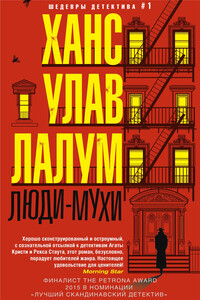
Убит бывший лидер норвежского Сопротивления и бывший член кабинета министров Харальд Олесен. Его тело обнаружено в запертой квартире, следов взлома нет, орудие убийства отсутствует. На звук выстрела к двери Олесена сбежались все соседи, но никого не увидели. Инспектор уголовного розыска Колбьёрн Кристиансен считает, что убийство, скорее всего, совершил кто-то из них. Более того, он полагает, что их показания лживы.
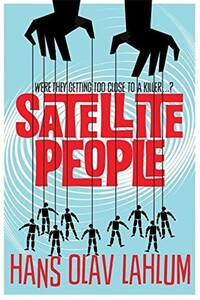
A gripping, evocative, and ingenious mystery which pays homage to Agatha Christie, Satellite People is the second Norwegian mystery in Hans Olav Lahlum's series. Oslo, 1969: When a wealthy man collapses and dies during a dinner party, Norwegian Police Inspector Kolbjorn Kristiansen, known as K2, is left shaken. For the victim, Magdalon Schelderup, a multimillionaire businessman and former resistance fighter, had contacted him only the day before, fearing for his life. It soon becomes clear that every one of Schelderup's 10 dinner guests is a suspect in the case.
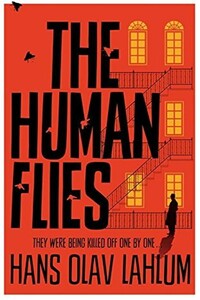
Oslo, 1968: ambitious young detective Inspector Kolbjorn Kristiansen is called to an apartment block, where a man has been found murdered. The victim, Harald Olesen, was a legendary hero of the Resistance during the Nazi occupation, and at first it is difficult to imagine who could have wanted him dead. But as Detective Inspector Kolbjorn Kristiansen (known as K2) begins to investigate, it seems clear that the murderer could only be one of Olesen's fellow tenants in the building. Soon, with the help of Patricia – a brilliant young woman confined to a wheelchair following a terrible accident – K2 will begin to untangle the web of lies surrounding Olesen's neighbors; each of whom, it seems, had their own reasons for wanting Olesen dead.
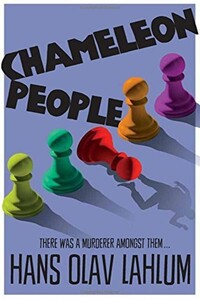
From the international bestselling author, Hans Olav Lahlum, comes Chameleon People, the fourth murder mystery in the K2 and Patricia series.1972. On a cold March morning the weekend peace is broken when a frantic young cyclist rings on Inspector Kolbjorn 'K2' Kristiansen's doorbell, desperate to speak to the detective.Compelled to help, K2 lets the boy inside, only to discover that he is being pursued by K2's colleagues in the Oslo police. A bloody knife is quickly found in the young man's pocket: a knife that matches the stab wounds of a politician murdered just a few streets away.The evidence seems clear-cut, and the arrest couldn't be easier.
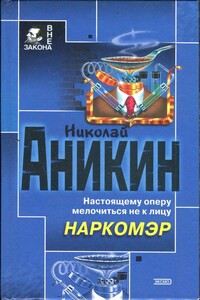
Тупик. Стена. Старый кирпич, обрывки паутины. А присмотреться — вроде следы вокруг. Может, отхожее место здесь, в глухом углу? Так нет, все чисто. Кто же сюда наведывается и зачем? И что охраняет тут охрана? Да вот эту стену и охраняет. Она, как выяснилось, с секретом: время от времени отъезжает в сторону. За ней цех. А в цеху производят под видом лекарства дурь. Полковник Кожемякин все это выведал. Но надо проникнуть внутрь и схватить за руку отравителей, наживающихся на здоровье собственного народа. А это будет потруднее…

«Посмотреть в послезавтра» – остросюжетный роман-триллер Надежды Молчадской, главная изюминка которого – атмосфера таинственности и нарастающая интрига.Девушка по имени Венера впадает в кому при загадочных обстоятельствах. Спецслужбы переправляют ее из закрытого городка Нигдельск в Москву в спецклинику, где известный ученый пытается понять, что явилось причиной ее состояния. Его исследования приводят к неожиданным результатам: он обнаруживает, что их связывает тайна из его прошлого.
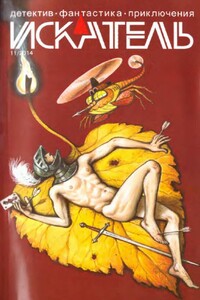
«ИСКАТЕЛЬ» — советский и российский литературный альманах. Издаётся с 1961 года. Публикует фантастические, приключенческие, детективные, военно-патриотические произведения, научно-популярные очерки и статьи. В 1961–1996 годах — литературное приложение к журналу «Вокруг света», с 1996 года — независимое издание.В 1961–1996 годах выходил шесть раз в год, в 1997–2002 годах — ежемесячно; с 2003 года выходит непериодически.Содержание:Анатолий Королев ПОЛИЦЕЙСКИЙ (повесть)Олег Быстров УКРАДИ МОЮ ЖИЗНЬ (окончание) (повесть)Владимир Лебедев ГОСТИ ИЗ НИОТКУДА.
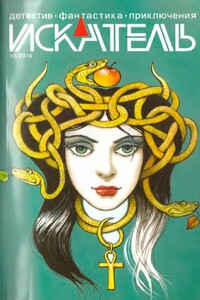
«ИСКАТЕЛЬ» — советский и российский литературный альманах. Издается с 1961 года. Публикует фантастические, приключенческие, детективные, военно-патриотические произведения, научно-популярные очерки и статьи. В 1961–1996 годах — литературное приложение к журналу «Вокруг света», с 1996 года — независимое издание.В 1961–1996 годах выходил шесть раз в год, в 1997–2002 годах — ежемесячно; с 2003 года выходит непериодически.Содержание:Олег Быстров УКРАДИ МОЮ ЖИЗНЬ (повесть);Петр Любестовский КЛЕТКА ДЛЯ НУТРИИ (повесть)
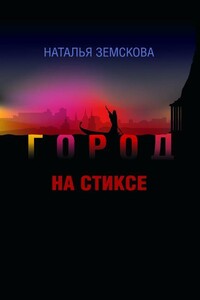
Наталья Земскова — журналист, театральный критик. В 2010 г. в издательстве «Астрель» (Санкт-Петербург) вышел её роман «Детородный возраст», который выдержал несколько переизданий. Остросюжетный роман «Город на Стиксе» — вторая книга писательницы. Молодая героиня, мечтает выйти замуж и уехать из забитого новостройками областного центра. Но вот у неё на глазах оживают тайны и легенды большого губернского города в центре России, судьбы талантливых людей, живущих рядом с нею. Роман «Город на Стиксе» — о выборе художника — провинция или столица? О том, чем рано или поздно приходится расплачиваться современному человеку, не верящему ни в Бога, ни в черта, а только в свой дар — за каждый неверный шаг.
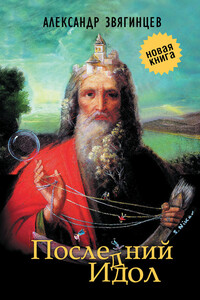
В сборник «Последний идол» вошли произведения Александра Звягинцева разных лет и разных жанров. Они объединены общей темой исторической памяти и личной ответственности человека в схватке со злом, которое порой предстает в самых неожиданных обличиях. Публикуются рассказы из циклов о делах следователей Багринцева и Северина, прокуроров Ольгина и Шип — уже известных читателям по сборнику Звягинцева «Кто-то из вас должен умереть!» (2012). Впервые увидит свет пьеса «Последний идол», а также цикл очерков писателя о событиях вокруг значительных фигур общественной и политической жизни России XIX–XX веков — от Петра Столыпина до Солженицына, от Александра Керенского до Льва Шейнина.